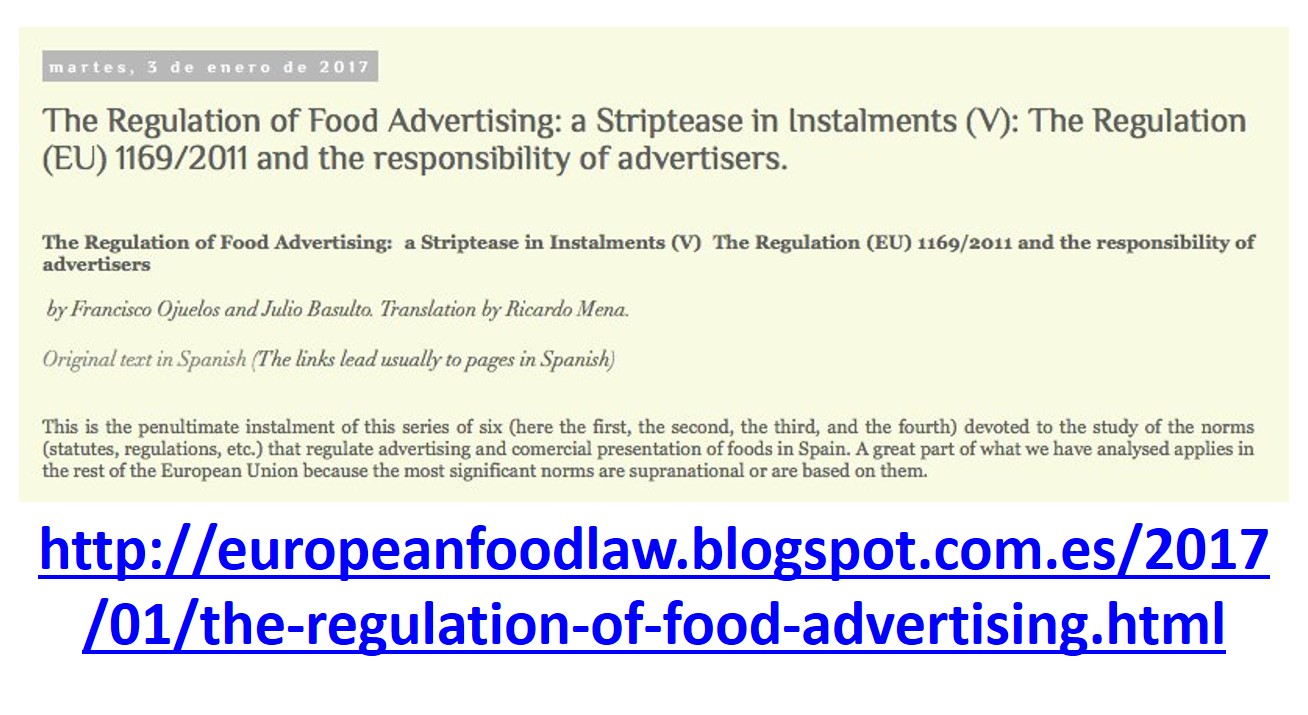by Francisco Ojuelos and Julio Basulto. Translation by Ricardo Mena.
This is the penultimate instalment of this series of six (here the
first, the
second, the
third, and the
fourth) devoted to the study of the norms (statutes, regulations, etc.) that regulate advertising and comercial presentation of foods in Spain. A great part of what we have analysed applies in the rest of the European Union because the most significant norms are supranational or are based on them.
Brief review
To come here, the way has made us pass, let us remember, through all these steps:
I. Introduction.
II. Context. The applicable norms:
1) General Advertising and consumers.
2) Unfair Practices.
3) “Specific” unfair practices on food advertising.
4) The Regulation (EC) No 1924/2006 of the European Parliament and of the Council of 20 December 2006 on nutrition and health claims made on foods.
We already know that all these norms guarantee the rights to receive a correct and truthful information (that it be true) and that, furthermore, it does not confound us, for example, by making us believe that a food is healthy when overall it is not so.
We have also discovered that the legislation establishes that for a food to contain nutritional statements (for instance, “source of fiber”) or staments of healthy properties (for example, “it reduces cholesterol”) the European Food Safety Authority (EFSA) must be able to check and allow that there is solid scientific evidence about it. If you do not trust us, you can read the review of the Spanish Agency for Consumer Affairs, Food Safety and Nutrition (AECOSAN) in this link:
http://aesan.msssi.gob.es/AESAN/web/cadena_alimentaria/detalle/tipos_declaraciones.shtml.
The following points remain, then:
5. The Regulation (EU) No 1169/2011 of the European Parliament and of the Council of 25 October 2011 on the provision of food information to consumers.
6. The responsibility of advertisers and their agents.
III. The advertising aimed at children.
IV. Conclusions.
Today we are going to get into points 5 and 6, and we will leave for the following (and final) instalment, the food advertising addressed at children and the conclusions. But before that, a brief but needed parenthesis.
Parenthesis: authorised statements
We allow ourselves to make a pause, before moving on, in order to show where to find those statements allowed by the EFSA to this date, in case it is of any interest to some reader.

Debe estar conectado para enviar un comentario.